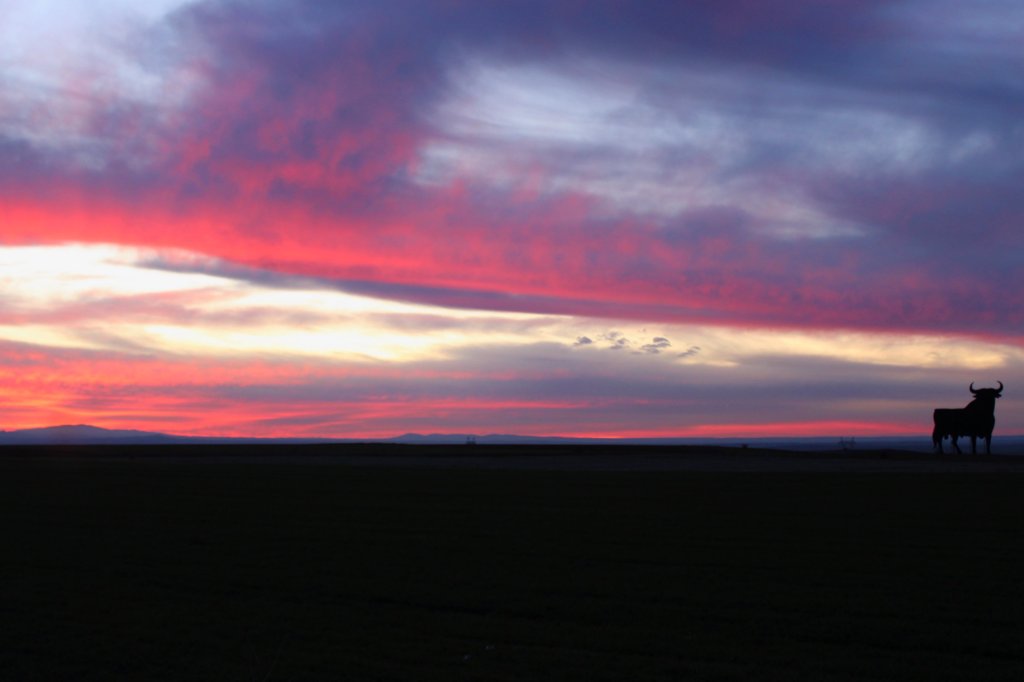Three years ago, in December of 2019, Rebe and I took a trip up north, to Léon and Asturias. Though I have already written a post about those two areas, my first visit was brief—and in any case I did not have a decent camera back then. It is with much apology, therefore, that I upload these belated photos of what was a thoroughly lovely holiday.
The drive from Madrid to León is the better part of four hours. Thus, we could have arrived at a decent time, had not the rental company been swamped with angry customers, waiting to pick up their cars. A word to the wise: when you rent at the cheapest company, you end up paying one way or another—in time, emotional energy, and yes, unexpected payments. As the Spanish say, lo barato sale caro. This has been my consistent experience with rental companies and airlines—though, I admit, I am so stingy that I still can’t help myself when I see a good deal.
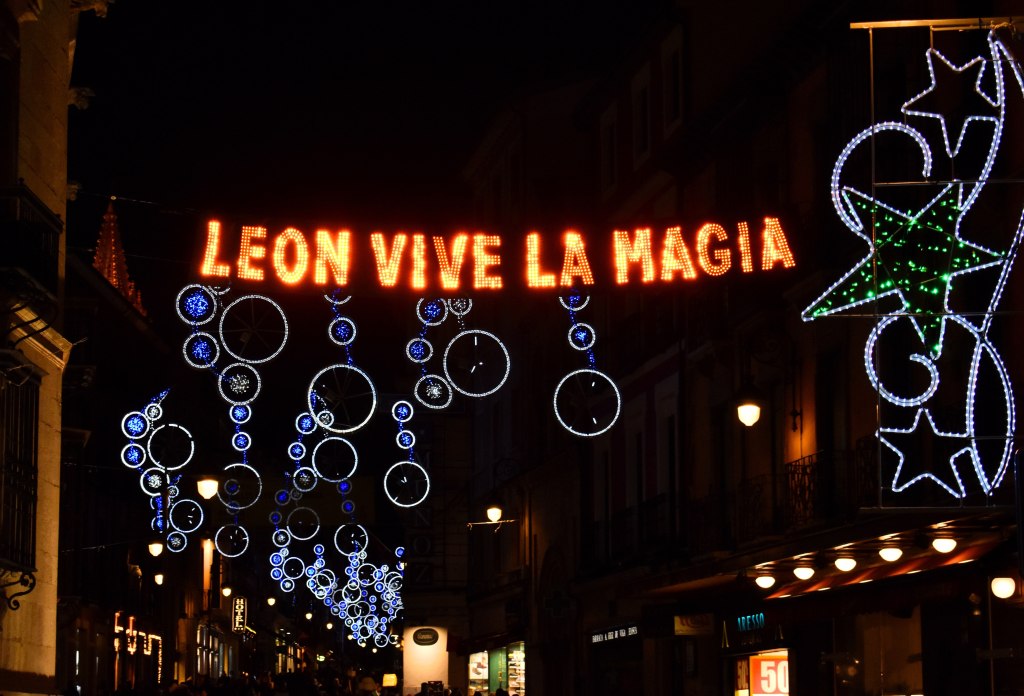
In any case, we arrived in León just before the sunset. Compared to Madrid, it was frigid—made that much colder by the fact that the airbnb I selected did not have heating or hot water (again, being cheap has its costs). We were greeted by a dramatic sunset, the pinks, oranges, and reds dancing across wisps of clouds, as the shifting light played across the gray surfaces of the city. Such sunsets are rare in normally cloudless Spain.

We headed straight for the cathedral, hoping to visit before it closed for the evening. This cathedral is, without doubt, one of the finest in Spain—and all of Europe, for that matter. León, you see, was a major stopping point along the Camino de Santiago, and so was visited by a constant stream of pilgrims during the Middle Ages—who, of course, brought both money and knowledge along with them. This explains the notable French influence in the gothic design of León Cathedral.
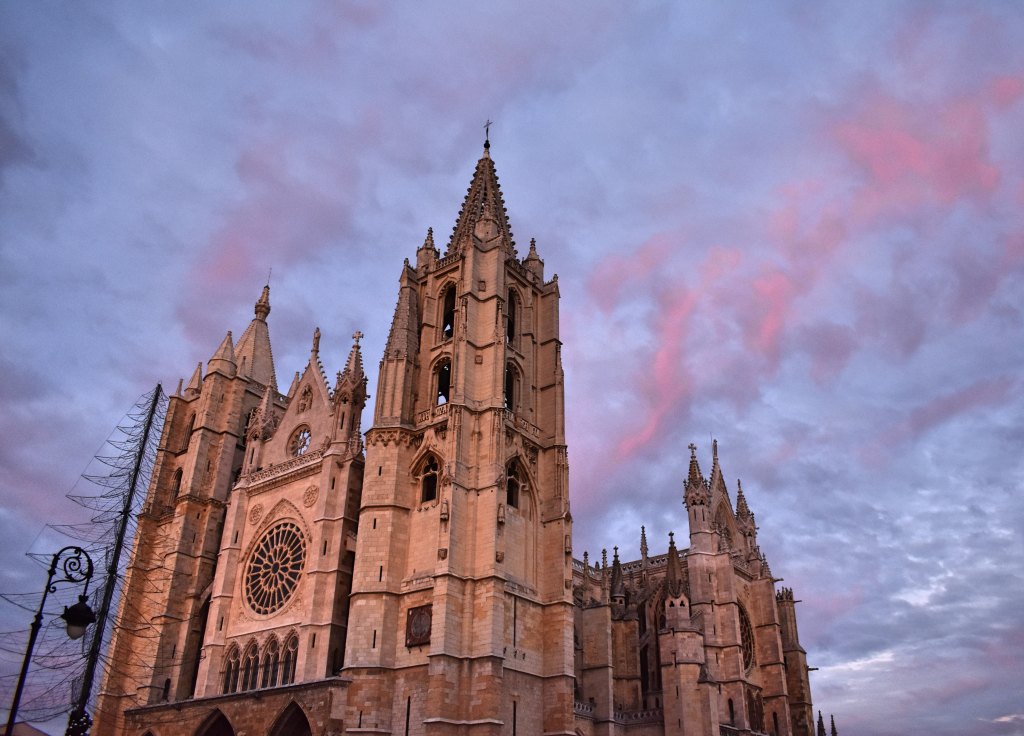
Although it is, by the exalted standards of gothic cathedrals, not especially big, its placement in an open plaza allows the visitor to appreciate the full, weighty majesty of the structure. In the waning evening light the delicate tracery, the graceful buttresses, and the many points and spires appeared like a dance captured in stone. But the real treasure is inside the walls—or, rather, in the walls themselves: the stained glass. Unlike most gothic churches, León has preserved its medieval windows (wars, bombs, and fires destroyed a good many over the centuries). These are absolutely stunning: full of intricate details and hundreds of individual figures, filling the interior with gemlike colors and ethereal light.
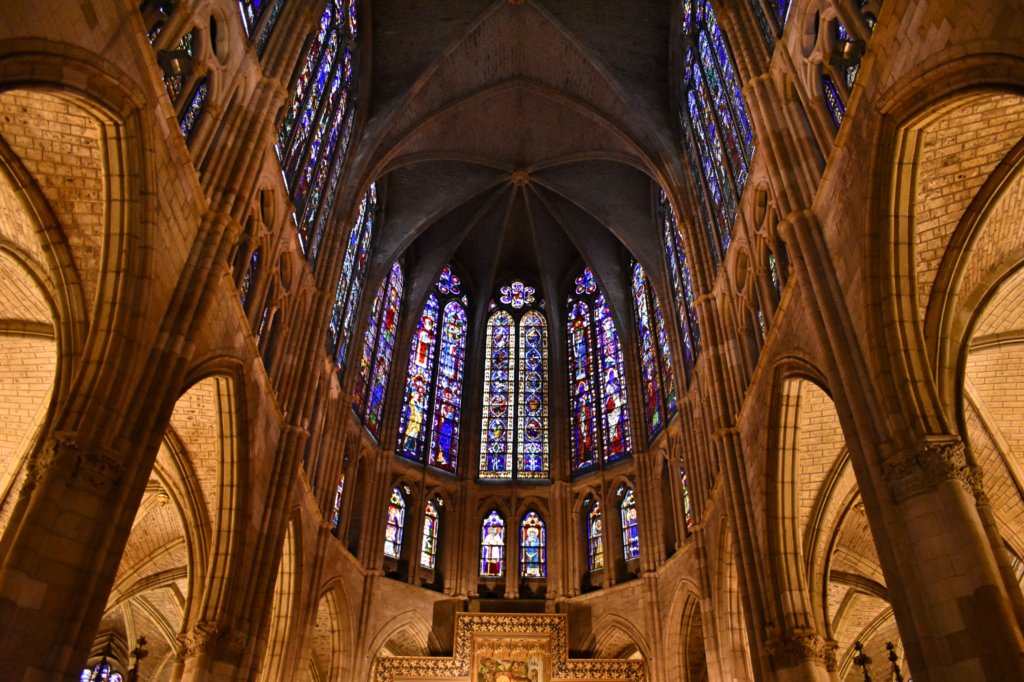
Once we had our fill of divine beauty, we turned our attention to more earthly matters. It was December and the town was full of Christmas decorations and market stands selling all sorts of knicknacks. I did some Christmas shopping—buying a colorful plate with a serrated center, for grinding up garlic, as a present to my grandmother—while Rebe contented herself with a new pair of mittens. And if you are in Spain in the winter months, it is obligatory to have some churros with hot chocolate.

Our meandering took us, inevitably, to Casa Botines, one of a handful of buildings outside Catalonia designed by Anton Gaudí. It is a severe building, strictly neogothic, lacking the exuberance of Gaudí’s later works. Even so, it fits in harmoniously with the city of León and is, at the very least, imposingly symmetrical. Right next to it is the Palacio de los Guzmanes, an attractive Renaissance structure that is now the seat of the local government (Guzmán was a wealthy family who commissioned the original palace).
This was basically it for our evening in León. After a short stroll along the Bernesga River, we drove to the Airbnb where we shivered all night.

However, this was not our last glimpse of the city. Three days later, on the way back from Asturias, we made a stop in the city to see the one major attraction we missed: the Basilica de San Isodoro. The history of the basilica’s name is interesting in itself. Though originally dedicated to another saint, in the middle ages it was re-dedicated after the Muslim ruler of Seville allowed the remains of the venerated Sevillian (he was a theologian and archbishop) to be moved north to León, which at the time was under Christian control.

The basilica can only be visited on a guided tour. And though this tour lasted about an hour, only two things really stick out in my memory. The first is a jewel-encrusted chalice that was displayed in a glass case, in the center of a room devoted solely to this item: the Chalice of Doña Urraca. This item lay relatively unnoticed and uncelebrated in the basilica’s collection until 2014, when two Spanish writers claimed that it was the legendary Holy Grail. The evidence for this assertion was thinner than air. Art historians believe the chalice was likely constructed in 11th century Germany. In any case, there is another potential Holy Grail in Valencia’s Cathedral, if you want to cover all of your bases.
The real jewel of the basilica is, undoubtedly, the royal pantheon. This is the burial place of many of the kings and queens of León—from a time before Spain existed as a country, and León was just one of several small kingdoms occupying the Iberian Peninsula. Yet the pantheon is not famous for its bodies, but for its art. The ceiling is covered in a series of beautiful and well-preserved murals from the Romanesque period. These are of such fine quality that they have been compared with the Sistine Chapel, though stylistically they share little with Michelangelo. As is typical of Romanesque art, the figures are stylized, almost cartoonish, with no attempt at creating accurate proportions or a realistic space. The result is a kind of naive charm that I find quite moving.
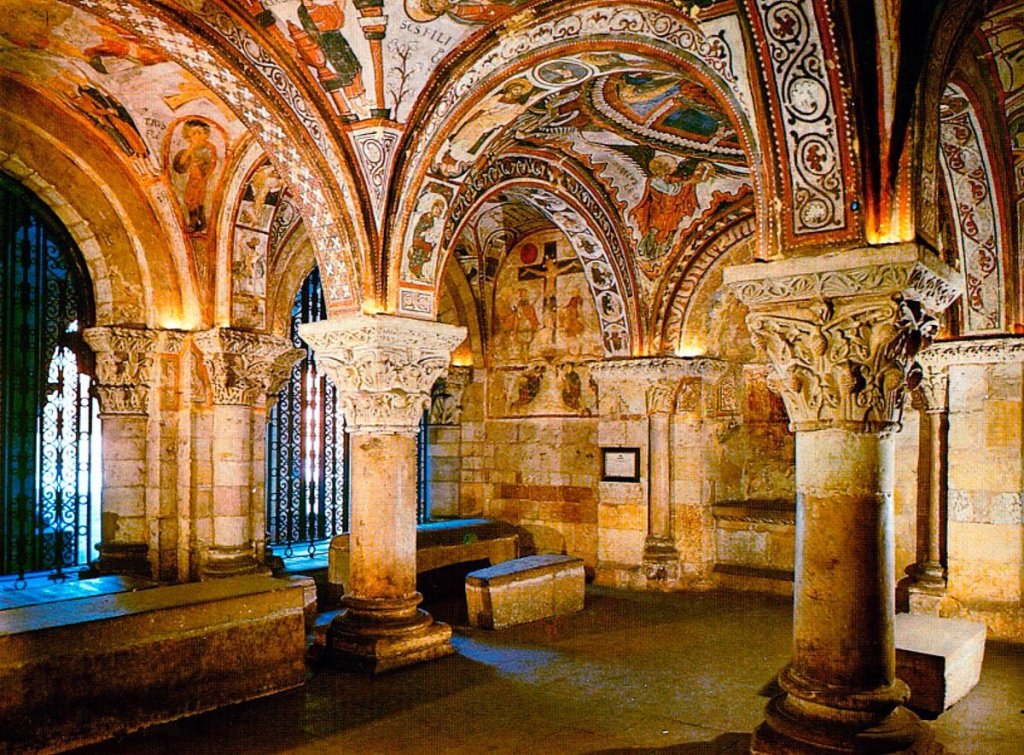
That was the end of our tour. We ate tacos at a nearby Mexican restaurant (surprisingly good), and kept going back towards Madrid. But not long after we left the city, the sky exploded into yet another gorgeous sunset—with streaks of purple, red, and pink undulating like waves in the rolling clouds. We pulled over to take pictures. By chance, right in our line of sight, was one of the iconic Osborne bulls—the universal symbol of Spain. It was yet another reminder of the enchanting beauty of this country.

